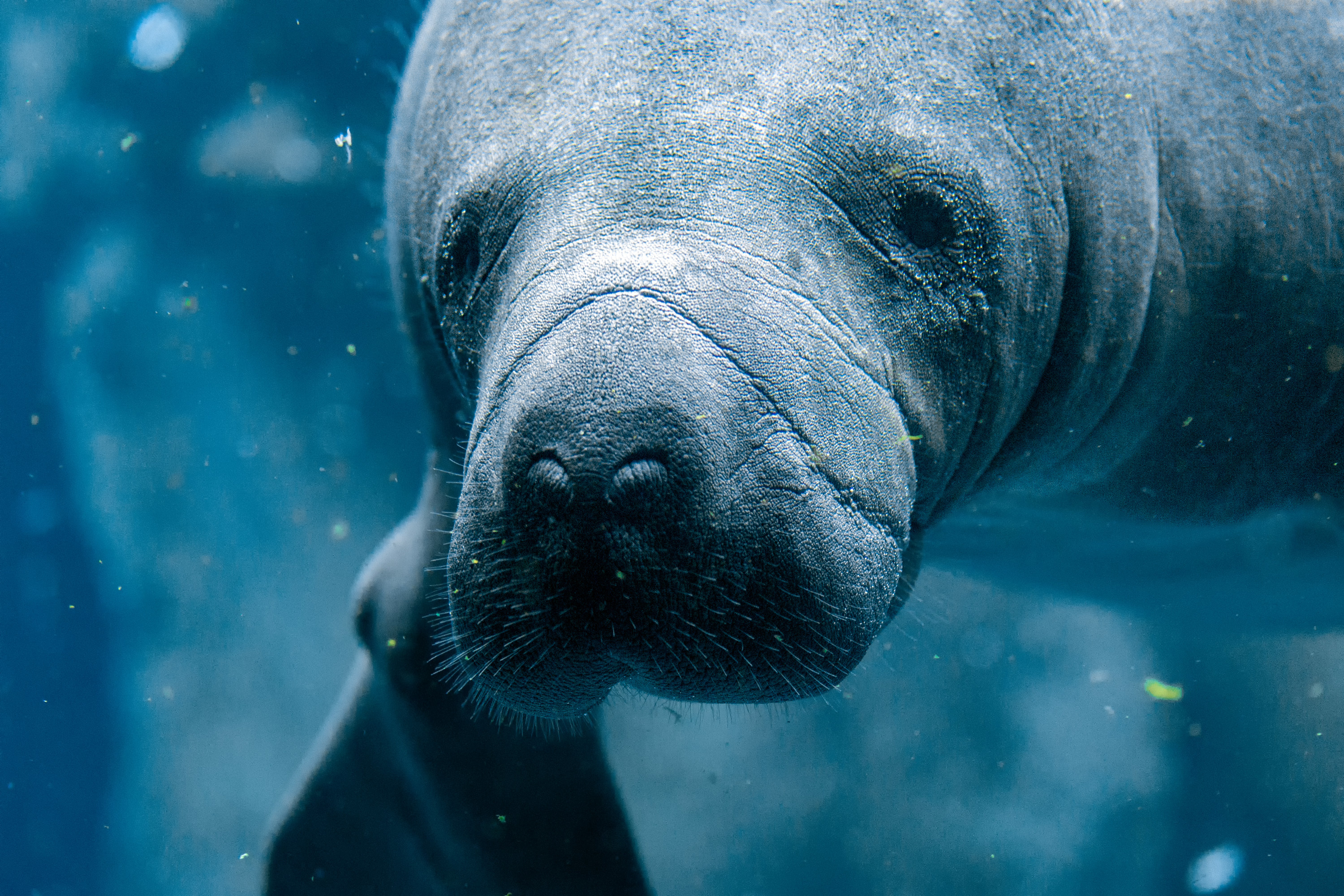
Manatee’s are large fully aquatic mammals that are sometimes referred to as sea cows. Some of their unique features include an egg-shaped head, flippers and a flat tail.
In honour of Manatee Awareness Month, here are a few facts you might not have known about this adorable aquatic mammal.
Manatees where once mistaken for mermaids
You’re probably thinking manatees look nothing like mermaids we read about in fairytales, and you’re right on that one but many years ago, sailors often mistook manatees for mermaids. Infact, Christopher Columbus was the first sailor to record a true sighting of a manatee and was surprised by its true form.
Manatees can grow to weigh as much as 3500 pounds
These sea mammoths are roughly 60 to 70 pounds in weight and and four to five feet long when they’re born. Most fully-grown adults typically weigh anywhere between 800 to 1200 pounds and can measure to be 10ft in length. But some have been reported to weigh as much as 3500 pounds!
Algae grows on manatees
This may come as a surprise to many that algae actually grows on a living being but manatees are slow moving animals who love to explore the water’s surface. Algae loves to grow in wet areas with lots of sunlight so this makes the back of manatees the perfect growing spot for them. While it may seem uncomfortable, manatees actually don’t seem to mind because the algae provides protection from the harsh sun.
Manatees are not territorial
Manatees are often seen swimming alone or in pairs, they have no need for herds or leaders. When they are seen in groups, it is often a mating herd or an informal meeting of the species enjoying a warm spot with lots of food.
Manatees can eat a 130 pounds of food in 24 hours
Manatees are herbivores, they eat mostly sea grass, freshwater vegetation and love to munch on algae. They can consume a tenth of their weight in food in 24 hours!
Male manatees take no part in raising their young
During mating season a female manatee, also known as the cow, will be surrounded by a dozen or more male manatees, known as the bull. When a male manatee successfully mates with the female, the female will carry their child (calf) for 12 months before giving birth. The male manatee will take no part in raising his young. The mother on the other hand, will give birth underwater and help the calf above water for air. The calf will be able to swim without assistance within the first hour. The calf will stay with its mother for the first two years to learn travel routes, food spots, warm water refuges and rest areas.
Manatees replace 90% of air in their lungs when they come up for a breath
If idle, a manatee does not need to come up for air for (up to) 20 minutes, however if they are swimming they tend to come up every 3-5 minutes. When they do finally take a breath, they replace 90% of air in their lungs whereas humans only replace a mere 10%.
Manatees have smooth brains
In comparison to a human brain (with all the bumps and ins and outs of the cortical folds) a manatees brain is smooth. In fact, manatees have the lowest ratio of their brain to their body of any other mammal. They may not be as smart as the dolphin but they can however, differ between colours and are extremely receptive to touch.
Humans… their predators
Manatees have no natural predators in the wild, however humans have played a huge role in making all three manatee species at risk for extinction. Half of West indie manatee deaths are caused by humans and most of them are boat collisions. Manatees are slow swimmers, swimming at a rate of 3 to 5 miles per hour. This makes it almost impossible for them to swim out of the way of an oncoming boat.
Manatees were once land creatures
Scientist have a theory that manatees evolved 60 million years ago from a four-legged land animal that resembled the elephant. This would explain why some manatees have up to 4 toenails on their flippers, resembling an elephant’s toenails. They also have mini versions of an elephant’s trunk for their upper lips which aids them in grabbing food.
Manatees squeal to communicate
Manatees may not be the most vocal mammals, but they are vocal. They use an array of squeals and squeaking sounds to communicate. They can make sounds to communicate fear or anger, in socialization or to find each other, similar to when a calf is looking for its mother.
